Syafri Bahar
IndoNLG: Benchmark and Resources for Evaluating Indonesian Natural Language Generation
Apr 16, 2021
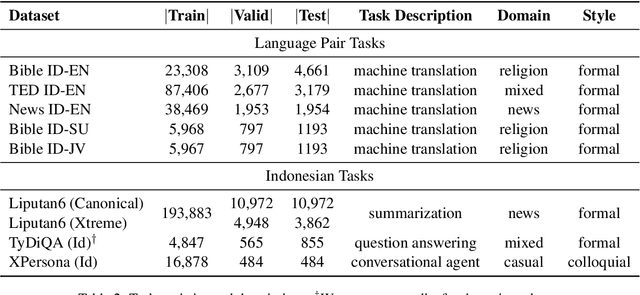


Abstract:A benchmark provides an ecosystem to measure the advancement of models with standard datasets and automatic and human evaluation metrics. We introduce IndoNLG, the first such benchmark for the Indonesian language for natural language generation (NLG). It covers six tasks: summarization, question answering, open chitchat, as well as three different language-pairs of machine translation tasks. We provide a vast and clean pre-training corpus of Indonesian, Sundanese, and Javanese datasets called Indo4B-Plus, which is used to train our pre-trained NLG model, IndoBART. We evaluate the effectiveness and efficiency of IndoBART by conducting extensive evaluation on all IndoNLG tasks. Our findings show that IndoBART achieves competitive performance on Indonesian tasks with five times fewer parameters compared to the largest multilingual model in our benchmark, mBART-LARGE (Liu et al., 2020), and an almost 4x and 2.5x faster inference time on the CPU and GPU respectively. We additionally demonstrate the ability of IndoBART to learn Javanese and Sundanese, and it achieves decent performance on machine translation tasks.
IndoNLU: Benchmark and Resources for Evaluating Indonesian Natural Language Understanding
Oct 08, 2020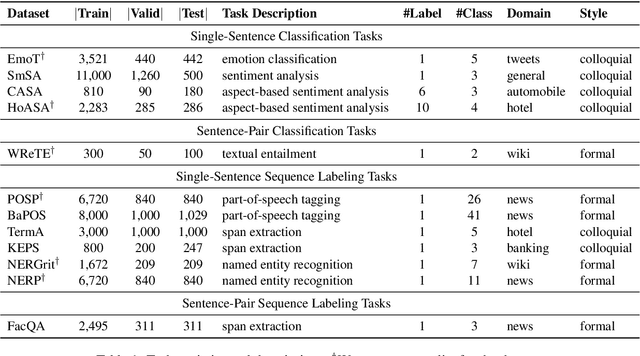
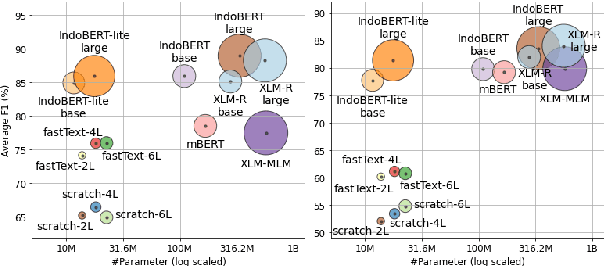
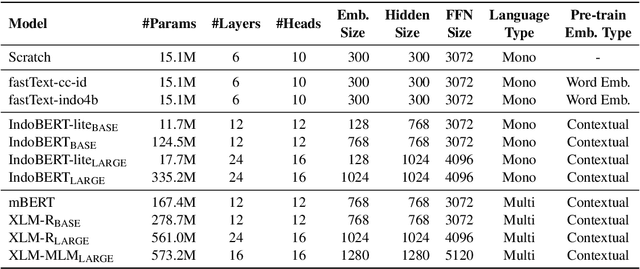
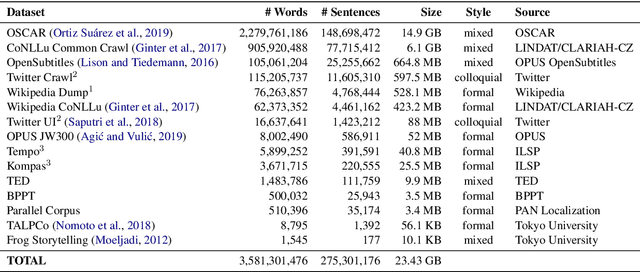
Abstract:Although Indonesian is known to be the fourth most frequently used language over the internet, the research progress on this language in the natural language processing (NLP) is slow-moving due to a lack of available resources. In response, we introduce the first-ever vast resource for the training, evaluating, and benchmarking on Indonesian natural language understanding (IndoNLU) tasks. IndoNLU includes twelve tasks, ranging from single sentence classification to pair-sentences sequence labeling with different levels of complexity. The datasets for the tasks lie in different domains and styles to ensure task diversity. We also provide a set of Indonesian pre-trained models (IndoBERT) trained from a large and clean Indonesian dataset Indo4B collected from publicly available sources such as social media texts, blogs, news, and websites. We release baseline models for all twelve tasks, as well as the framework for benchmark evaluation, and thus it enables everyone to benchmark their system performances.
 Add to Chrome
Add to Chrome Add to Firefox
Add to Firefox Add to Edge
Add to Edge